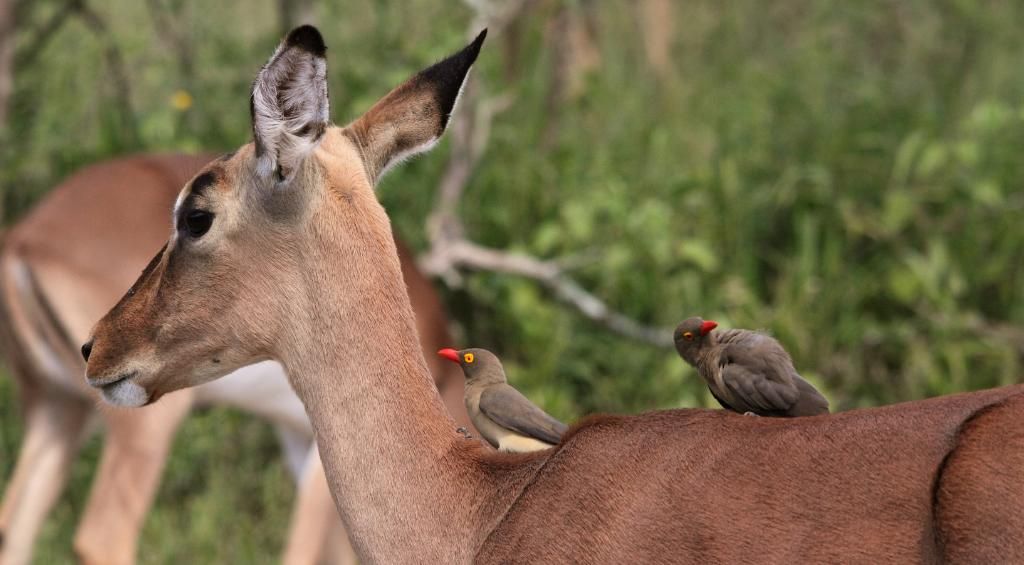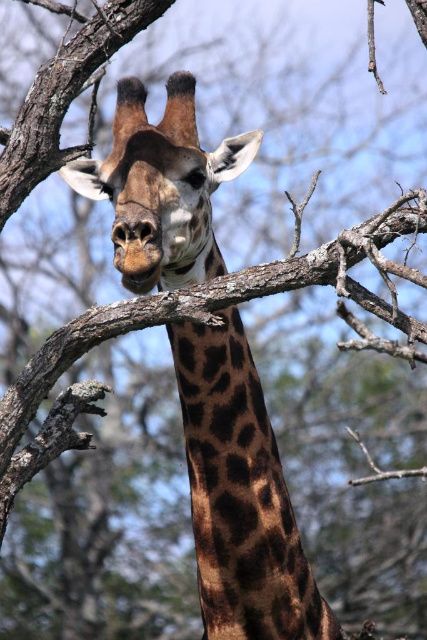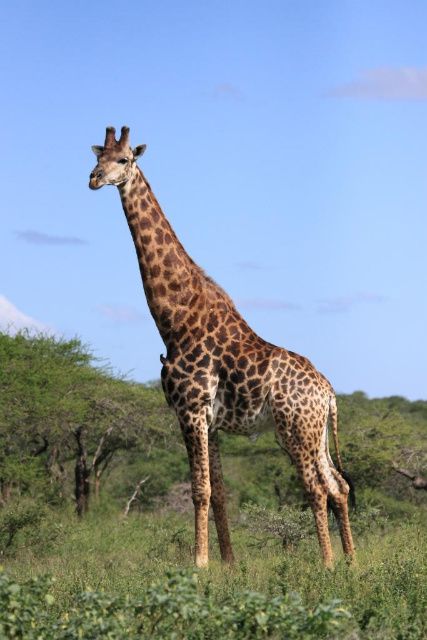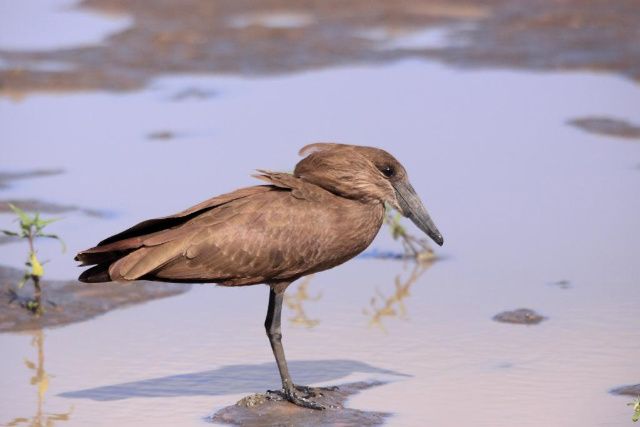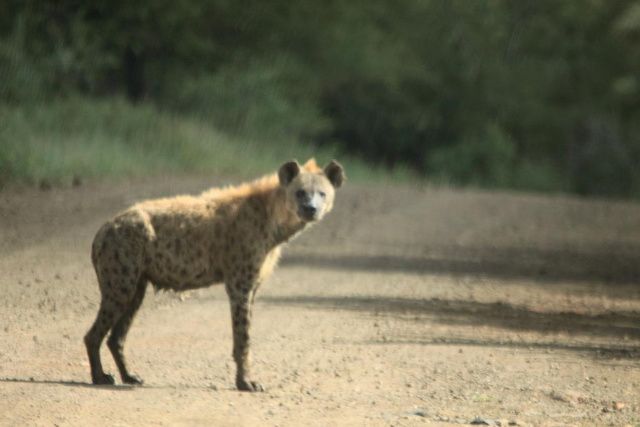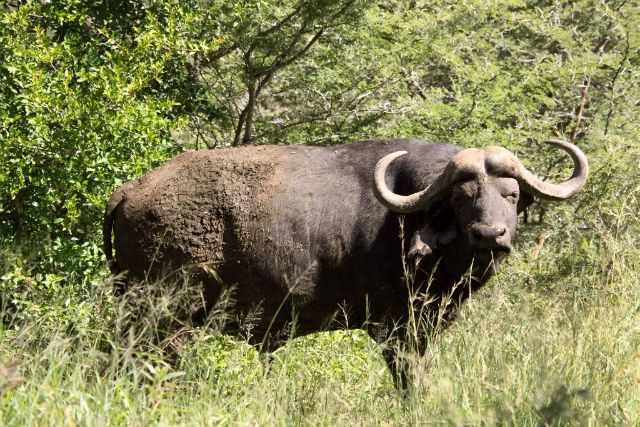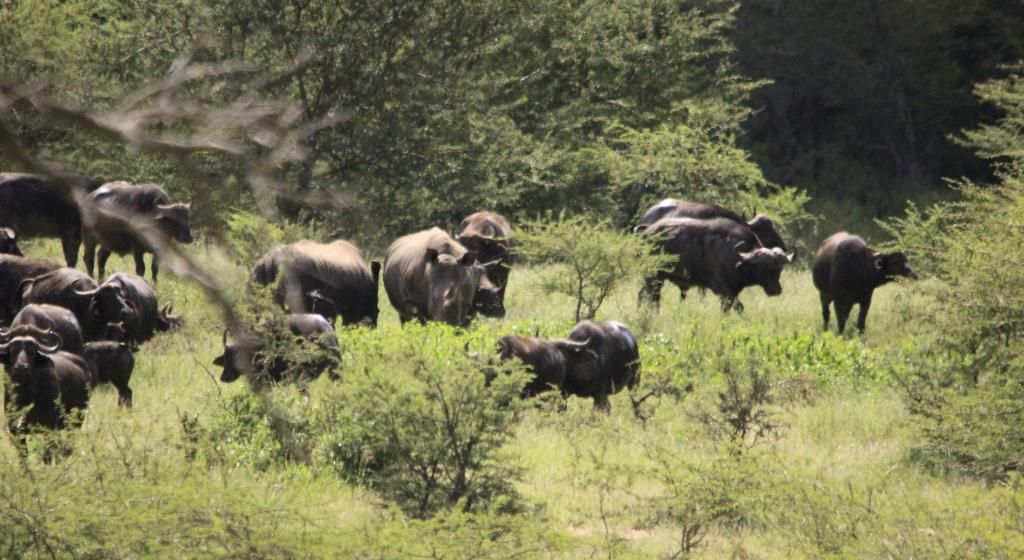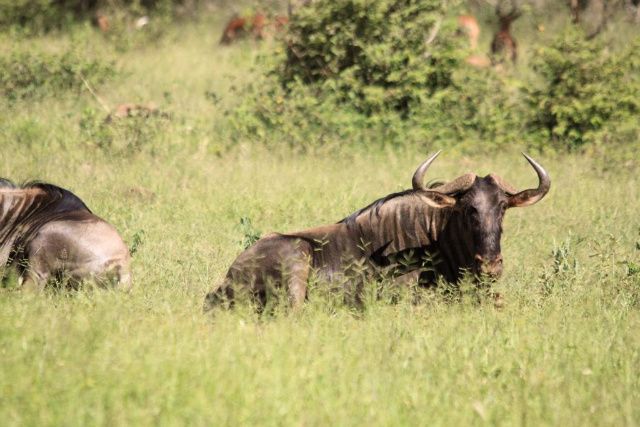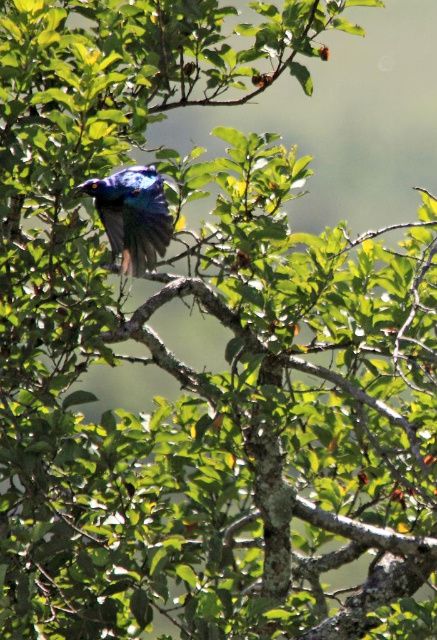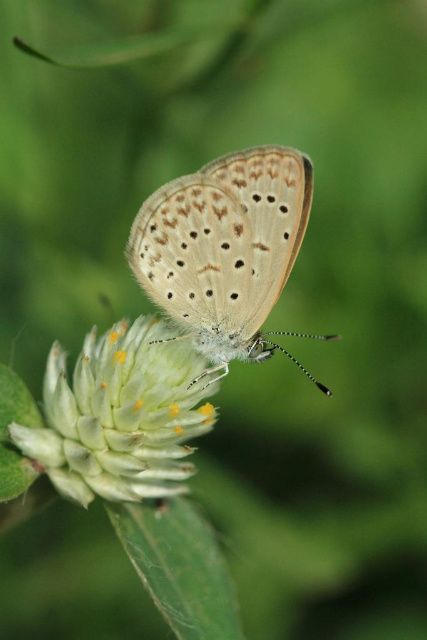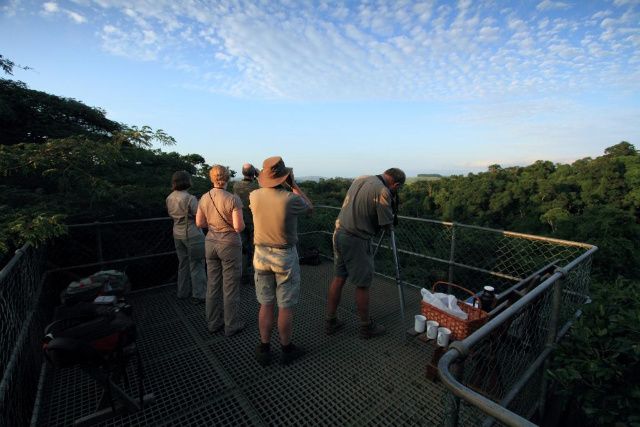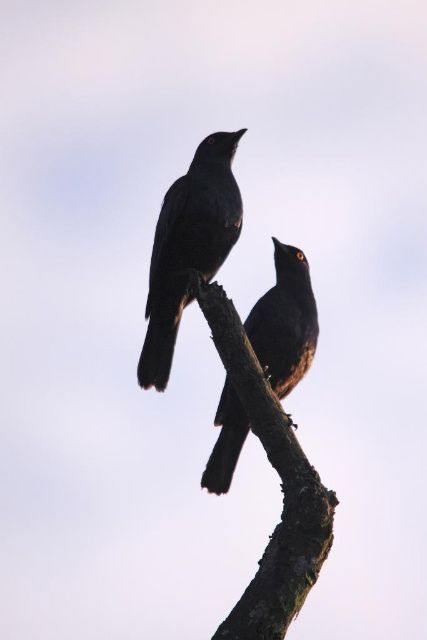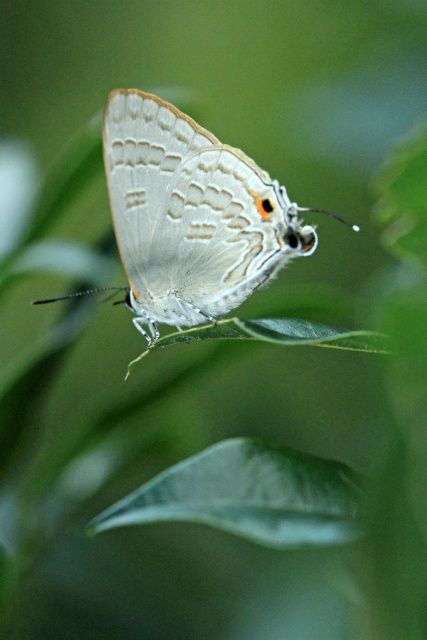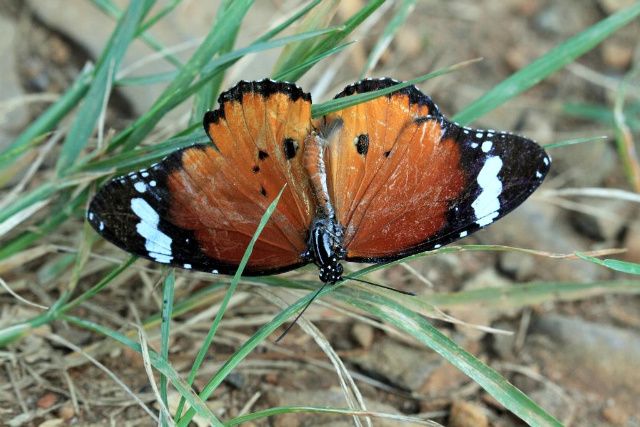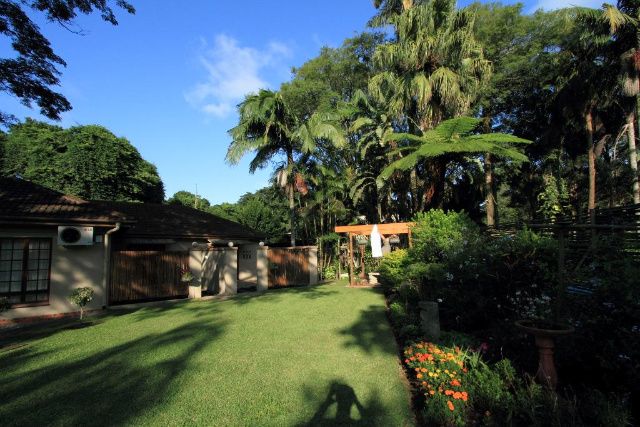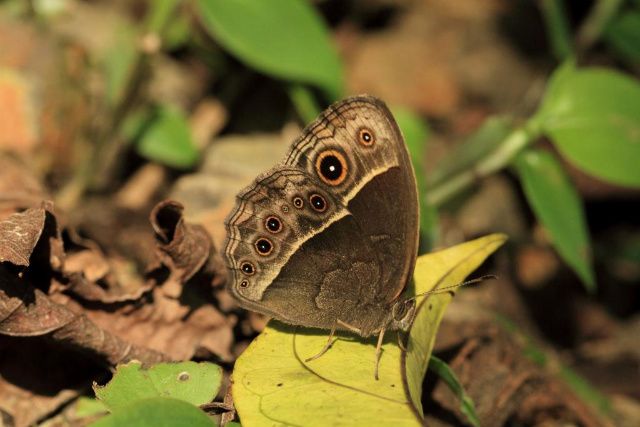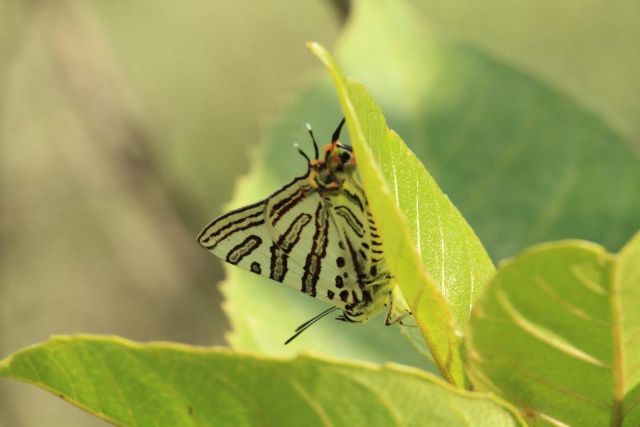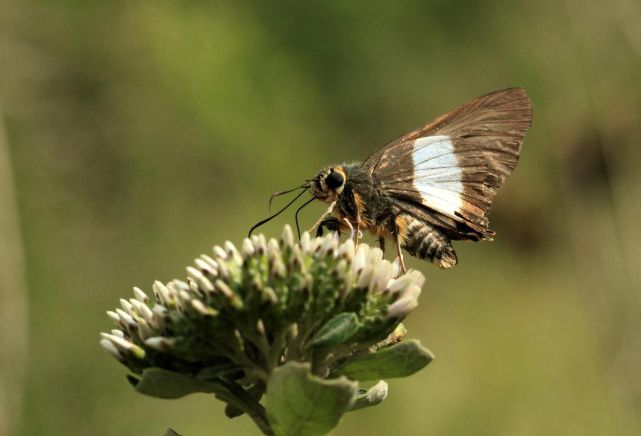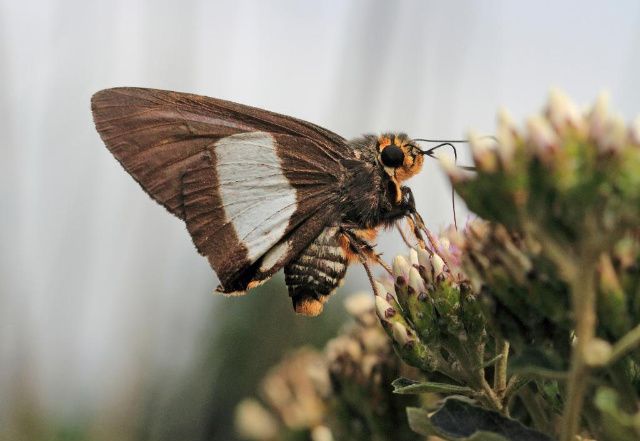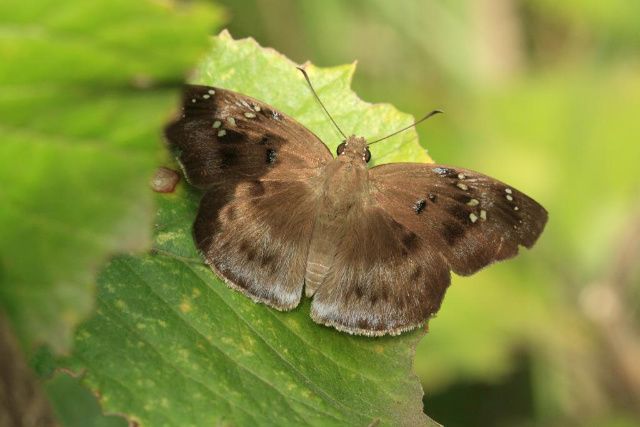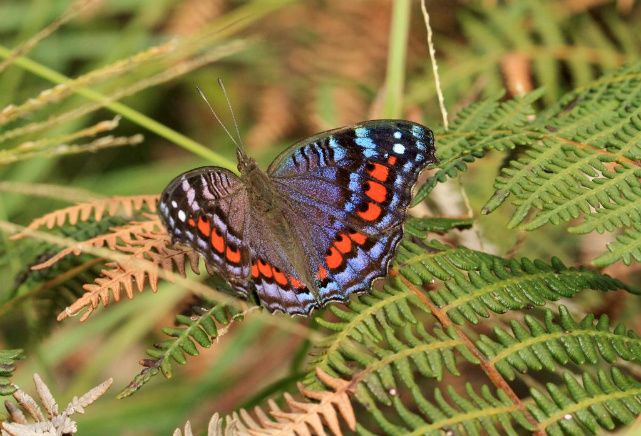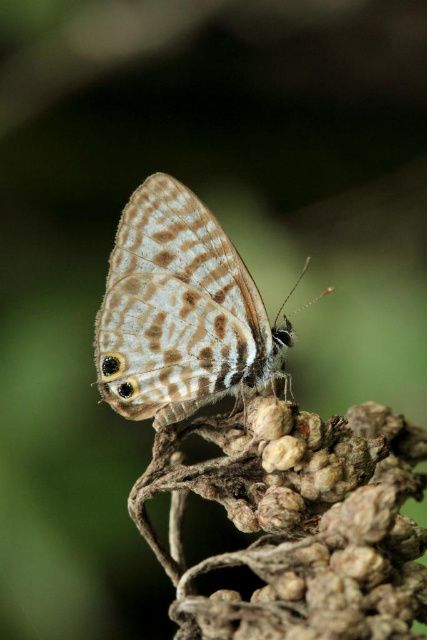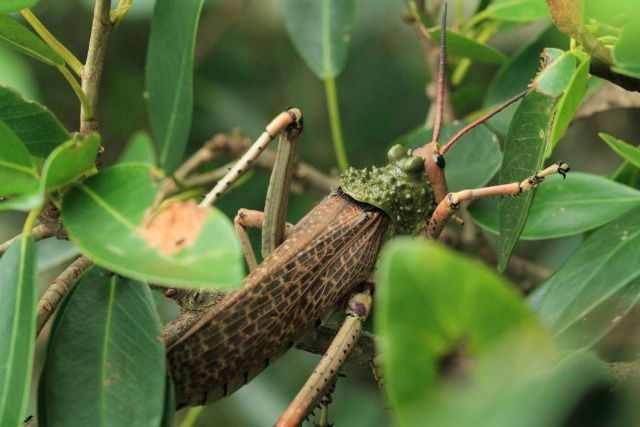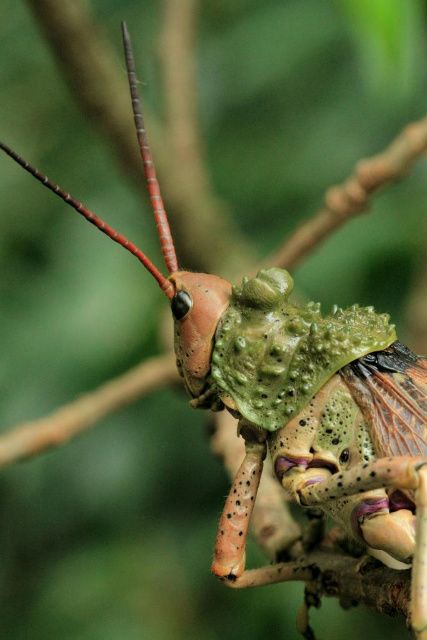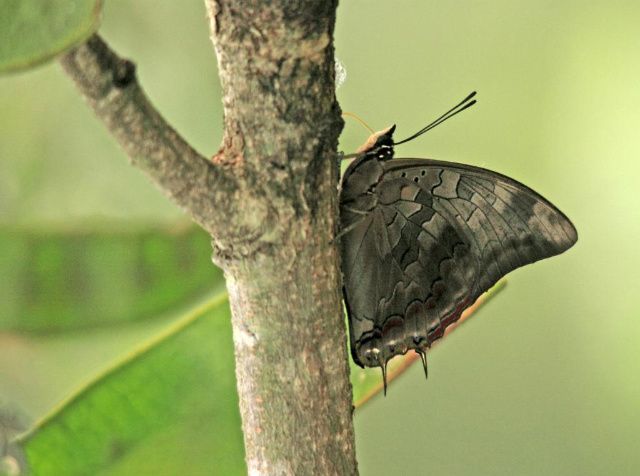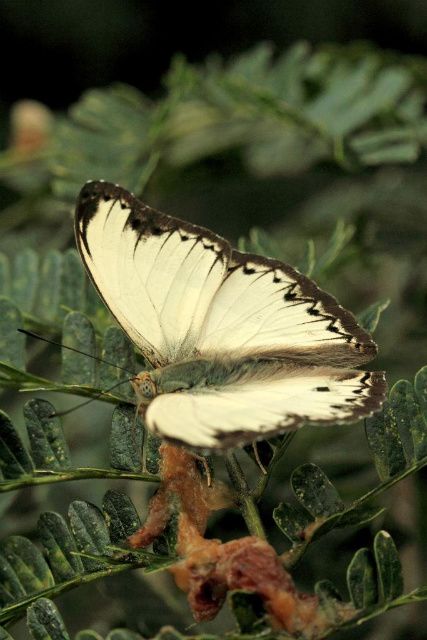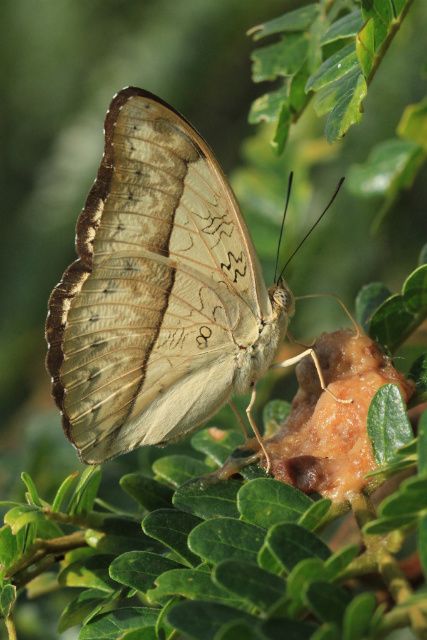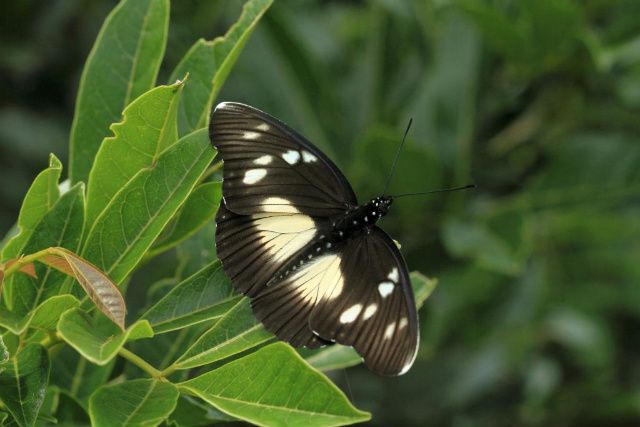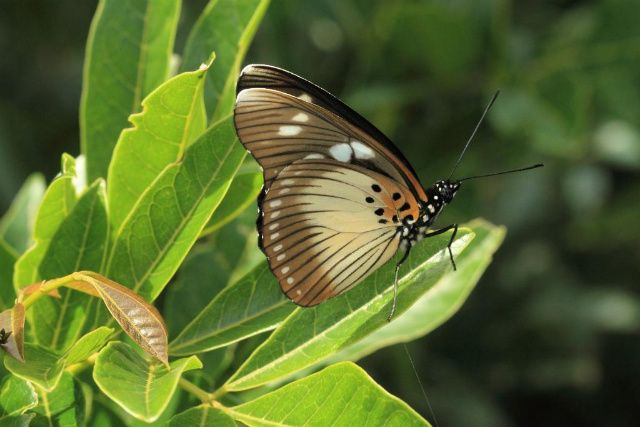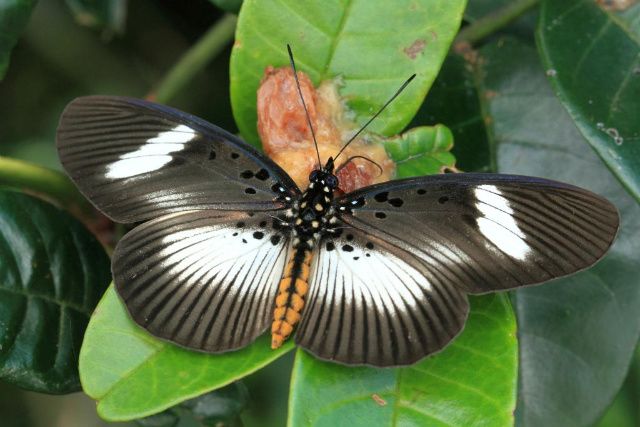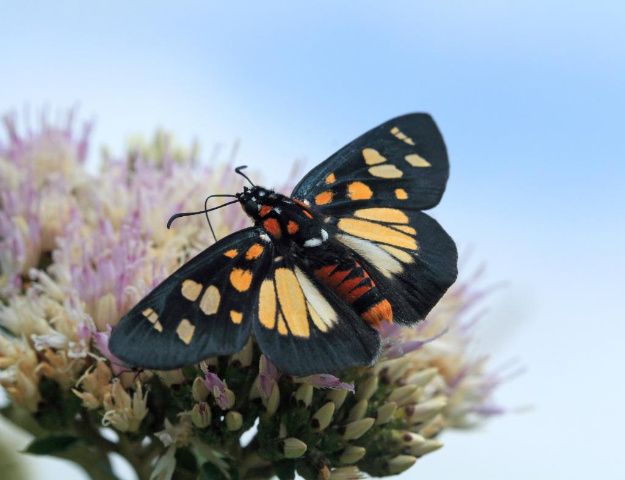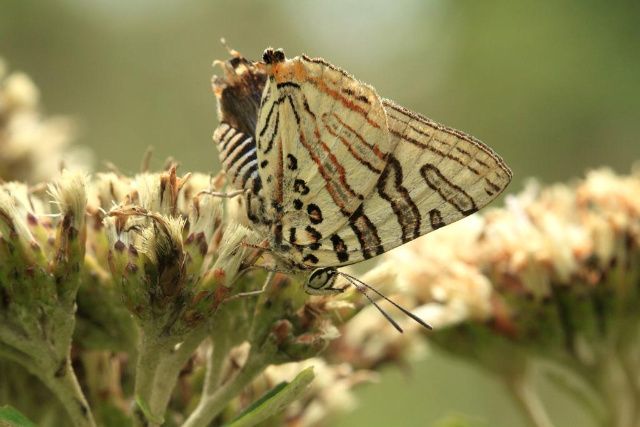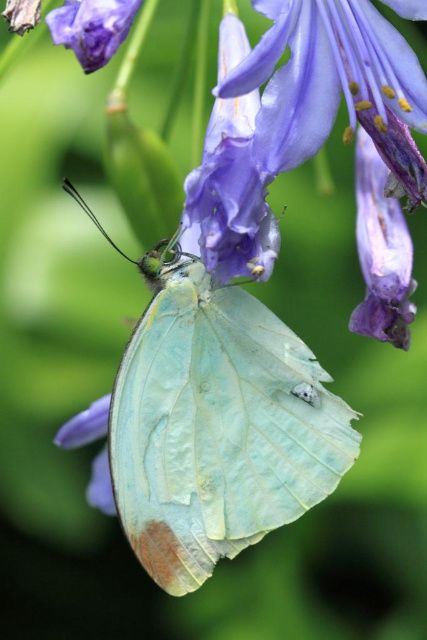Re: South Africa trip with Naturetrek (10-18 March)
Posted: Mon Apr 02, 2012 9:14 pm
Drive from St Lucia to Eshowe via Hluhluwe-Imfolozi reserve (Thursday 15th March)
We would leave St Lucia for the all-day drive to Eshowe at 9:00am on Thursday, but not before I’d nipped out trying to get a few last-minute photos of the St Lucia gated community and lawn-life. There were a few Blues, Citrus Swallowtails and a Blue Pansy out early on the lawns so I tried to get a few photos of these before we started our journey to the south-west in the mini-bus.
We would drive to Eshowe (our last residence of the trip) via the Hluhluwe-Imfolozi game reserve, which would make our journey a lot more picturesque than the motorway, although it would of course make the journey take longer. Karen and Linda both hoped we would finally see some Elephants while driving through the reserve but due to the water-holes being more abundant due to the frequency of recent rainfall the Elephants were to prove elusive and unseen, at least during this trip.
As it turned out we would be driven for almost a couple of hours though this reserve before we would start catching up with some animals: it was a hot, humid day with little cloud and most of the mammals seemed to have hidden to avoid the hot temperatures. Impala were our first close sightings, followed by a Brown Snake Eagle. We stopped off for a quick break at one of the reserve car-parks (no more than a dirt patch with a single toilet) and here we saw a few more Orange-Tips and White butterflies. There were tracks left in the mud by Lions but no sign of the animals themselves: instead we had a few quiet moments when we watched several small birds in the thorn bushes (Burnt-Necked Eremomela) as they skittishly looked for small insects. Soon we were off again in the mini-bus along the rather bumpy tracks and would only have the journey broken by the occasional Zebra in the road (one seemed quite ready for a stand-off) and some good views of Warthogs (so far these had been to shy to stop anywhere near us). Some work was being done on one of the roads and we didn’t see any animals again until we had left these behind us by about 20 minutes driving. Finally we stopped near some small river beds and had a really nice view of some White-Fronted Bee-Eaters: these beautiful birds had only been seen from a distance up until now, but here were a couple quite happy to sit on a branch right near the car – it was obviously a good point to catch insects.
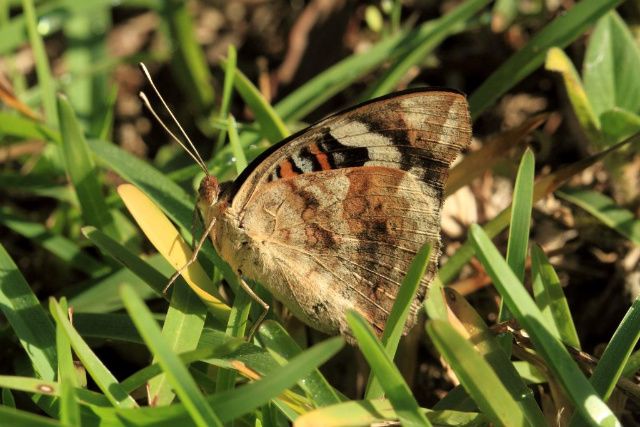
Before we left St Lucia I had a chance to photograph this Blue Pansy butterfly on one of the grass lawns.
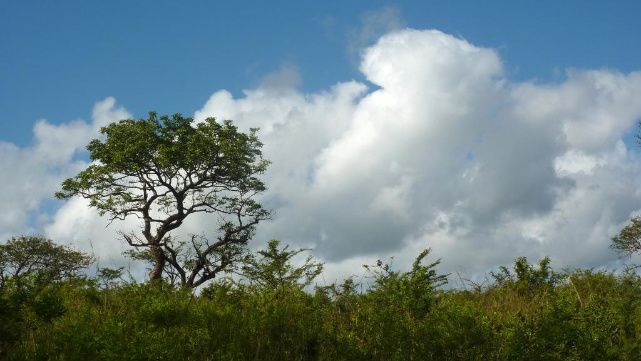
The morning's cloud is deceptive. Today would be very hot and many of the animals would disappear from view!

Our old friend the Impala would be the first animals we would see in the Hluhluwe-Imfolozi reserve.

This male Impala seems to be using one of the small bush sucklers to have a good scratch.
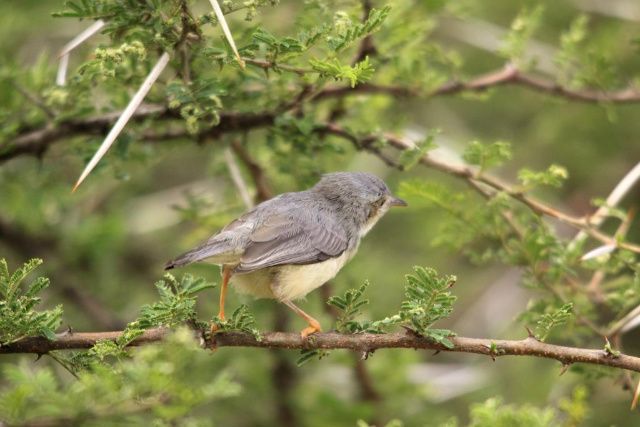
At one of our first stops we see these lovely little birds (Burnt-Necked Eremomela).
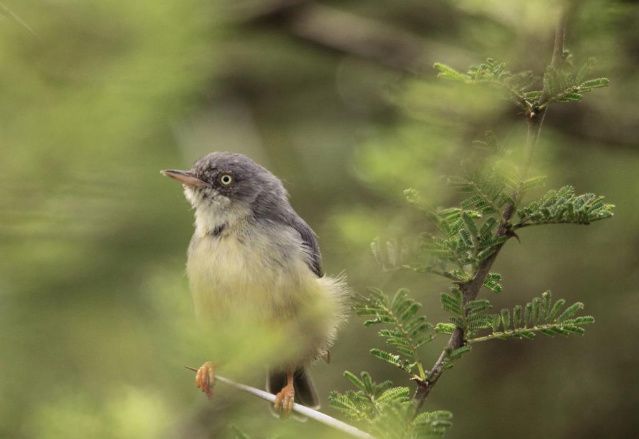
I would sit and watch the thorn bushes for several minutes before one of the Eremomela would appear...
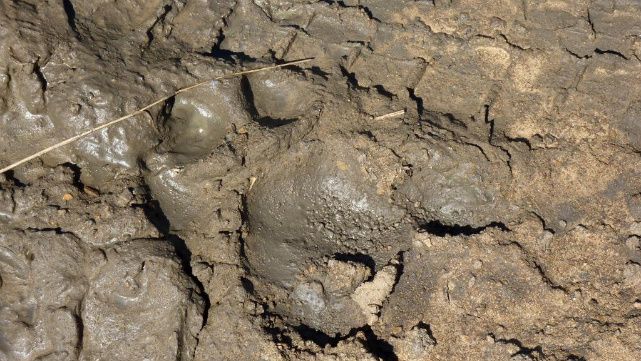
This footprint in the mud was as near as we would get to a Lion on the reserve...
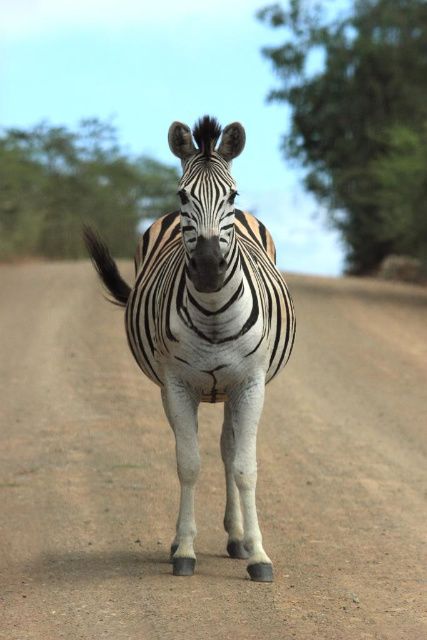
This Plains Zebra on the road seems ready to have a face-off with us before moving on.
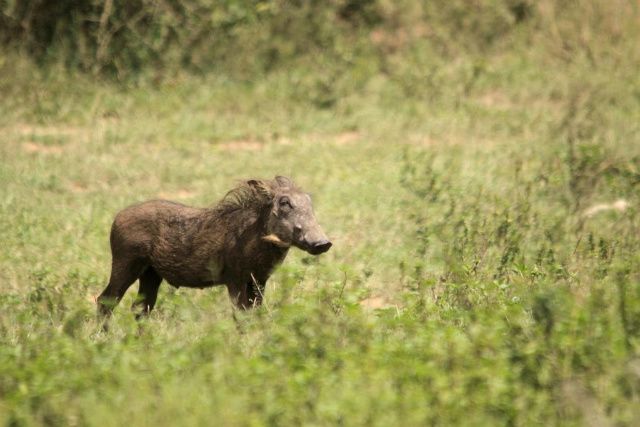
Finally we start to get some better views of the Common Warthogs.
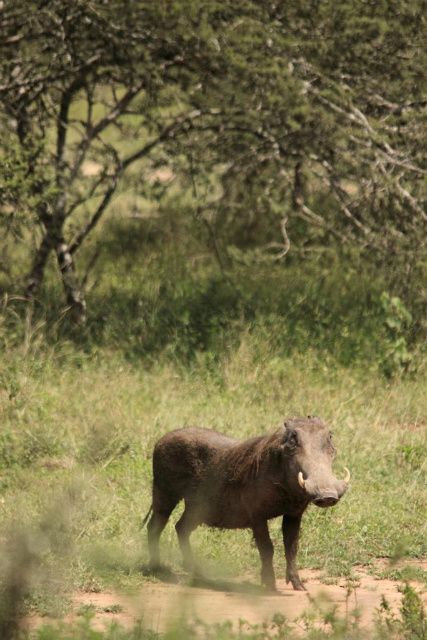
The Warthogs have been quite shy up until now.
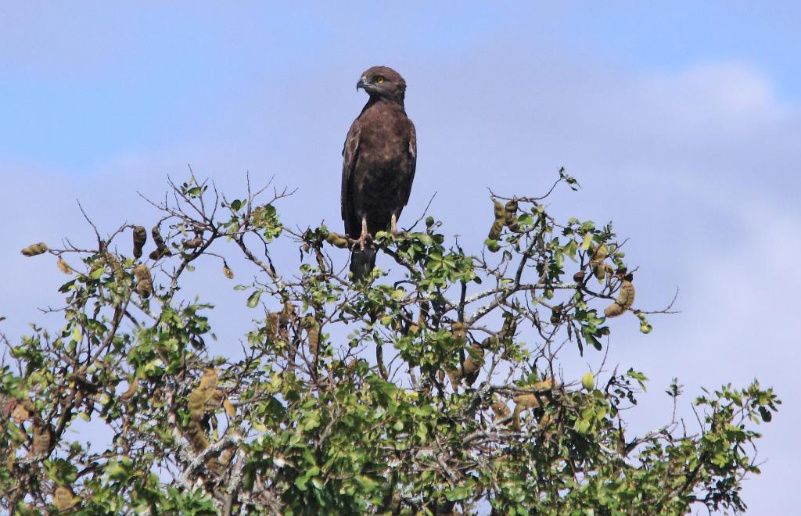
A Brown Snake-Eagle keeps an eye on everything from atop one of the trees.
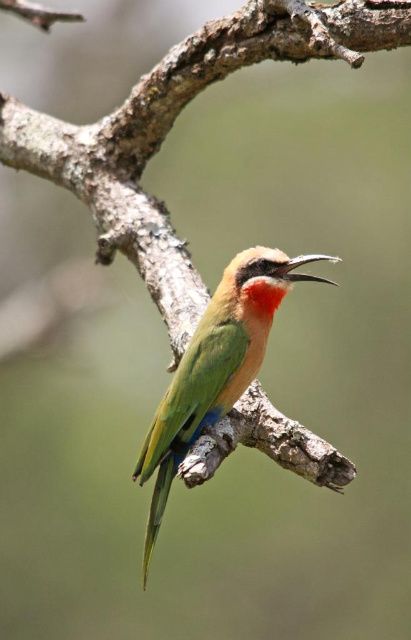
For me, one of the best views of a bird while we visited South Africa; a White-Fronted Bee Eater.
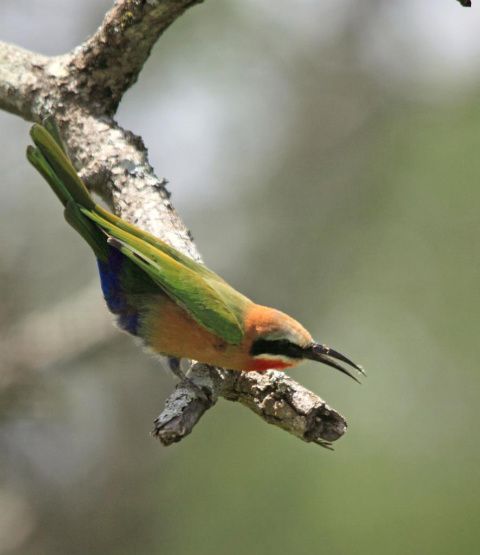
These Bee-Eaters were rather oblivious to the mini-bus and were more content to catch the local insects.
We stopped again at one of the car-parks for a brief bit of lunch (some nice bread and cheese Bert had bought at the shops at St Lucia). This was a lovely place to stop as it gave great views across one of the rivers that ran through the reserve. We watched a few of the birds around the car-park (plus the odd White-Barred Acraea and African Monarch butterflies that flew through) but soon we were off again.
The journey through the rest of the reserve brought us close again to Giraffes, Wildebeest, Warthogs (again), Impala (being looked after by Red-Billed Oxpeckers) and also some really close views again of two White Rhinoceros (possibly a Mother and older Calf). These were so close at one point to the mini-bus that I had to change lenses to a wide-angle so as to get a proper view of these two companions: they were so close you could see the dried mud as protection on their skin.
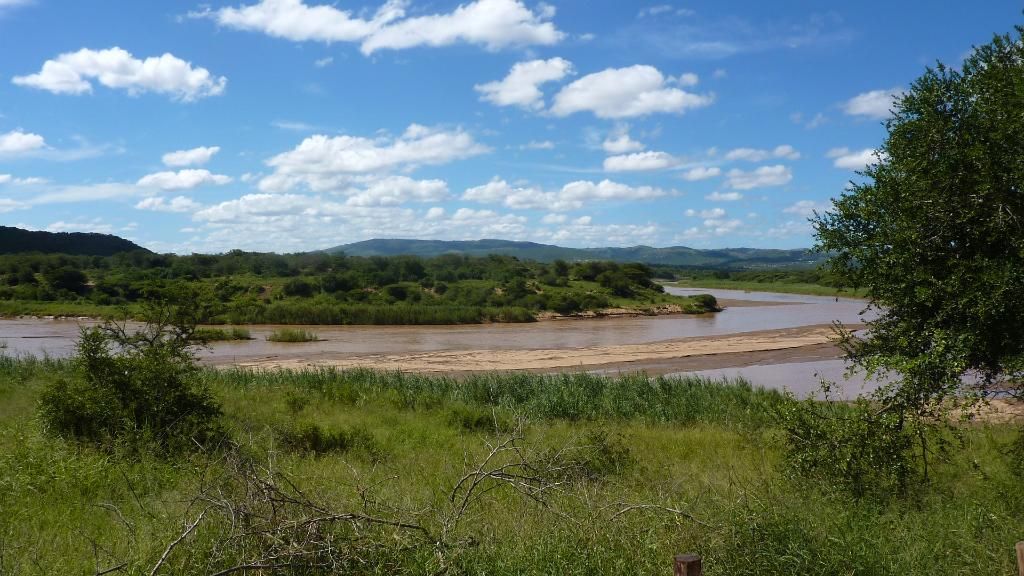
A stop for lunch at a lovely spot in the middle of the reserve, where we can see the river.
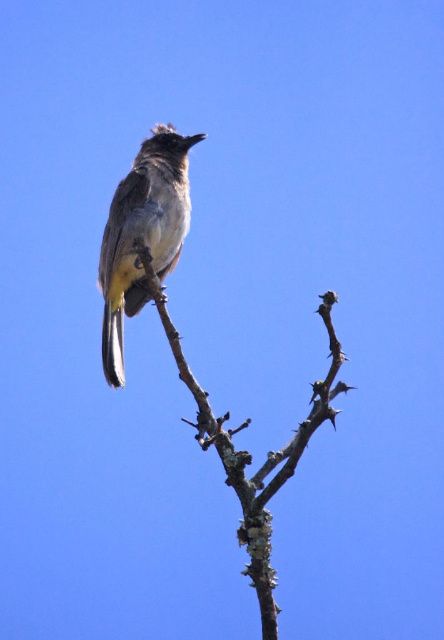
A Dark-Caped Bulbul uses one of the trees in the lunchtime stop to have a good look out.
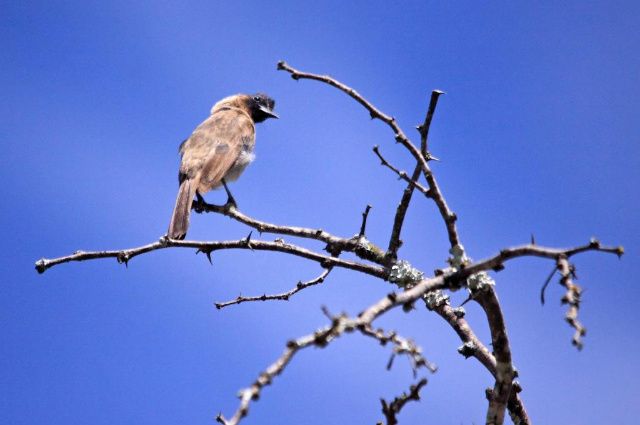
The Bulbul even has time to look down on the strange man below him with a camera...
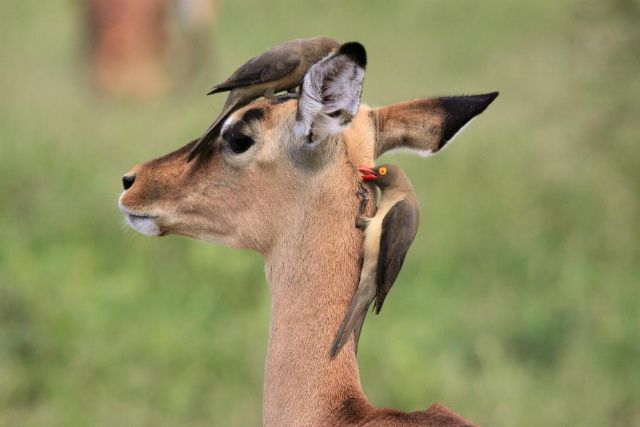
Red-Billed Oxpeckers hitch a ride on the Impala in return for searching out unwanted insects for their hosts.
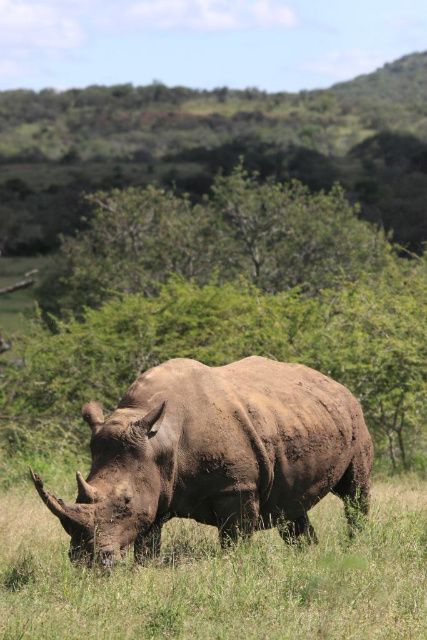
Finally we come across two lovely Rhinoceros wandering through the grass.

They come so close to the mini-bus that you can see the mud-caked on their skin and the Oxpeckers looking after them.

One of my favourite views of any animal while we are in South Africa.
We would leave St Lucia for the all-day drive to Eshowe at 9:00am on Thursday, but not before I’d nipped out trying to get a few last-minute photos of the St Lucia gated community and lawn-life. There were a few Blues, Citrus Swallowtails and a Blue Pansy out early on the lawns so I tried to get a few photos of these before we started our journey to the south-west in the mini-bus.
We would drive to Eshowe (our last residence of the trip) via the Hluhluwe-Imfolozi game reserve, which would make our journey a lot more picturesque than the motorway, although it would of course make the journey take longer. Karen and Linda both hoped we would finally see some Elephants while driving through the reserve but due to the water-holes being more abundant due to the frequency of recent rainfall the Elephants were to prove elusive and unseen, at least during this trip.
As it turned out we would be driven for almost a couple of hours though this reserve before we would start catching up with some animals: it was a hot, humid day with little cloud and most of the mammals seemed to have hidden to avoid the hot temperatures. Impala were our first close sightings, followed by a Brown Snake Eagle. We stopped off for a quick break at one of the reserve car-parks (no more than a dirt patch with a single toilet) and here we saw a few more Orange-Tips and White butterflies. There were tracks left in the mud by Lions but no sign of the animals themselves: instead we had a few quiet moments when we watched several small birds in the thorn bushes (Burnt-Necked Eremomela) as they skittishly looked for small insects. Soon we were off again in the mini-bus along the rather bumpy tracks and would only have the journey broken by the occasional Zebra in the road (one seemed quite ready for a stand-off) and some good views of Warthogs (so far these had been to shy to stop anywhere near us). Some work was being done on one of the roads and we didn’t see any animals again until we had left these behind us by about 20 minutes driving. Finally we stopped near some small river beds and had a really nice view of some White-Fronted Bee-Eaters: these beautiful birds had only been seen from a distance up until now, but here were a couple quite happy to sit on a branch right near the car – it was obviously a good point to catch insects.

Before we left St Lucia I had a chance to photograph this Blue Pansy butterfly on one of the grass lawns.

The morning's cloud is deceptive. Today would be very hot and many of the animals would disappear from view!

Our old friend the Impala would be the first animals we would see in the Hluhluwe-Imfolozi reserve.

This male Impala seems to be using one of the small bush sucklers to have a good scratch.

At one of our first stops we see these lovely little birds (Burnt-Necked Eremomela).

I would sit and watch the thorn bushes for several minutes before one of the Eremomela would appear...

This footprint in the mud was as near as we would get to a Lion on the reserve...

This Plains Zebra on the road seems ready to have a face-off with us before moving on.

Finally we start to get some better views of the Common Warthogs.

The Warthogs have been quite shy up until now.

A Brown Snake-Eagle keeps an eye on everything from atop one of the trees.

For me, one of the best views of a bird while we visited South Africa; a White-Fronted Bee Eater.

These Bee-Eaters were rather oblivious to the mini-bus and were more content to catch the local insects.
We stopped again at one of the car-parks for a brief bit of lunch (some nice bread and cheese Bert had bought at the shops at St Lucia). This was a lovely place to stop as it gave great views across one of the rivers that ran through the reserve. We watched a few of the birds around the car-park (plus the odd White-Barred Acraea and African Monarch butterflies that flew through) but soon we were off again.
The journey through the rest of the reserve brought us close again to Giraffes, Wildebeest, Warthogs (again), Impala (being looked after by Red-Billed Oxpeckers) and also some really close views again of two White Rhinoceros (possibly a Mother and older Calf). These were so close at one point to the mini-bus that I had to change lenses to a wide-angle so as to get a proper view of these two companions: they were so close you could see the dried mud as protection on their skin.

A stop for lunch at a lovely spot in the middle of the reserve, where we can see the river.

A Dark-Caped Bulbul uses one of the trees in the lunchtime stop to have a good look out.

The Bulbul even has time to look down on the strange man below him with a camera...

Red-Billed Oxpeckers hitch a ride on the Impala in return for searching out unwanted insects for their hosts.

Finally we come across two lovely Rhinoceros wandering through the grass.

They come so close to the mini-bus that you can see the mud-caked on their skin and the Oxpeckers looking after them.

One of my favourite views of any animal while we are in South Africa.

